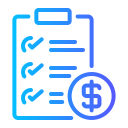Mastering Tax Efficiency in Personal Finance Strategies
Chosen theme: Tax Efficiency in Personal Finance Strategies. Explore practical, human-centered ways to keep more of what you earn by aligning savings, investing, and life decisions with smart tax planning. Subscribe and join the conversation as we turn tax rules into everyday advantages.
Foundations of Tax-Efficient Planning
Know Your Marginal and Effective Rates
Your marginal rate determines the tax on your next dollar, while your effective rate averages everything. Understanding both clarifies which actions truly matter. Comment with your bracket and we’ll discuss strategies tailored to your current income and goals.
Tax-Deferred Versus Tax-Exempt Accounts
Tax-deferred accounts lower taxes today but tax withdrawals later, while tax-exempt accounts trade no deduction now for potentially tax-free growth. Choosing the right mix can shape decades of outcomes. What mix fits your timeline, risk appetite, and retirement expectations?
Identify and Reduce Tax Drag
Tax drag sneaks in through frequent trading, nonqualified dividends, and short-term gains. Map where these costs appear in your portfolio, then relocate or reduce them. Share your biggest friction point, and let’s crowdsource tactics that protect your compounding.
Optimizing Accounts and Wrappers

Maximize employer matches first, then weigh traditional versus Roth contributions based on current and expected future tax brackets. Rebalance inside these accounts to avoid taxable events. Tell us whether you prioritize match, Roth flexibility, or immediate deductions this year.
Smart Income Timing and Withholding
Over-withholding gives the government an interest-free loan; under-withholding risks penalties. Update your forms after raises, new deductions, or life changes. Share your approach to balancing refunds versus take-home pay so others can learn from your experience.
Deductions, Credits, and Threshold Management
Bunching Deductions and SALT Limits
Consider bunching charitable gifts and medical expenses into alternating years to exceed the standard deduction. Track SALT caps and mortgage interest timing. Have you tried donor-advised funds to front-load giving while smoothing the impact on your cash flow?
Education Credits, 529 Plans, and Phaseouts
American Opportunity and Lifetime Learning Credits can offset tuition, but income limits apply. Coordinate 529 withdrawals with qualified expenses, and avoid double-counting. Share how you handle timing across semesters, reimbursements, and scholarships to preserve maximum eligibility.
Child, Dependent, and Earned Income Credits
Eligibility shifts with income, filing status, and dependents. Track childcare expenses, earned income thresholds, and documentation early. What tools help you organize receipts and forms so you never miss credits that could materially change your annual bottom line?
Tax-Efficient Investing Tactics
Asset Location Strategy
Place tax-inefficient assets, like taxable bonds and REITs, in tax-advantaged accounts. Keep broad-market index funds in taxable accounts for lower distributions. Which holdings in your portfolio generate the most taxes, and where could they live more efficiently?
Harvesting Gains Versus Harvesting Losses
Tax-loss harvesting can offset gains and up to a limited amount of income, but watch wash-sale rules. In lower brackets, harvested gains may be taxed at favorable rates. Share your calendar method for harvesting without disrupting long-term asset allocation.
Dividends: Qualified, Nonqualified, and Targeting
Qualified dividends often enjoy lower rates, while nonqualified dividends do not. Choose funds with disciplined turnover and mindful distribution policies. Do you prefer dividend-focused strategies or total-return approaches, and how do you manage distributions across account types?
Life Events and Filing Strategies
01
Marriage, Divorce, and Filing Status
Filing jointly can unlock credits but occasionally raises phaseout exposure. Model both statuses during transitions and coordinate withholding. If you recently changed status, which surprises did you encounter, and how did you adjust your plan to stay efficient?
02
Relocation, Home Buying, and Property Taxes
Moving states changes brackets, deductions, and property taxes. Time your closing, track points, and understand homestead rules. Share your state-to-state experience, and let’s compare how different regimes reshaped your budget, savings rate, and long-term investment assumptions.
03
Starting, Scaling, or Selling a Business
Entity choice, pass-through deductions, and basis tracking all matter. Keep clean books, mileage logs, and a quarterly tax calendar. Founders and freelancers: what structure did you choose and why, and how has it influenced your tax efficiency over time?
A Story About Quiet Wins: Emma’s Tax-Efficient Year
Emma reviewed her pay stubs, changed withholding, and increased her HSA contribution by a small amount she barely felt. She listed taxable funds throwing off distributions and planned to move them slowly without breaking her target asset allocation.
A Story About Quiet Wins: Emma’s Tax-Efficient Year
She maxed her employer match, shifted a bond fund into her IRA, and set calendar reminders for quarterly reviews. A donor-advised fund let her bunch two years of giving, while keeping her monthly donations flowing emotionally and practically as before.
A Story About Quiet Wins: Emma’s Tax-Efficient Year
By year-end, her refund shrank but her monthly cash flow improved, and her realized gains taxes dropped meaningfully. She left a comment summarizing lessons learned, inspiring others to test small moves, subscribe for updates, and build smarter habits next year.
